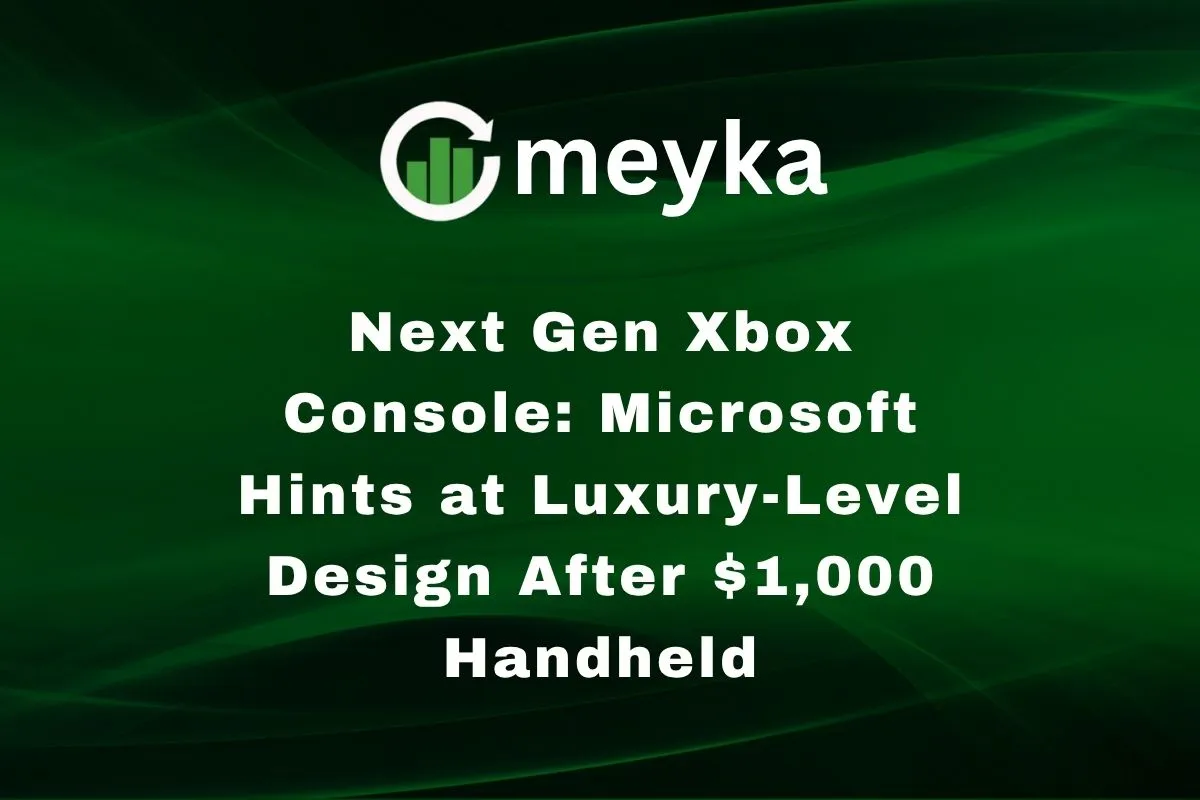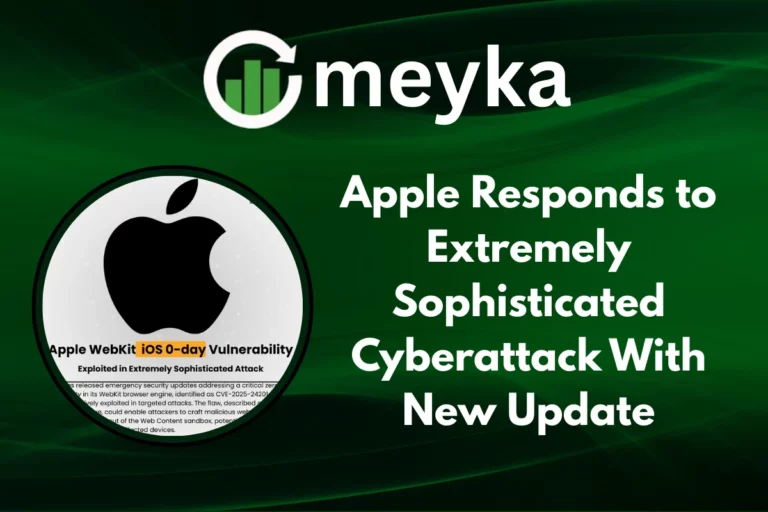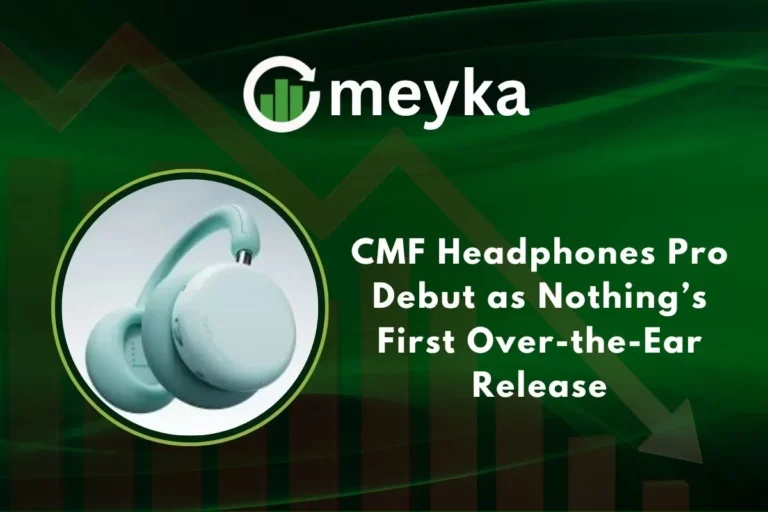Next Gen Xbox Console: Microsoft Hints at Luxury-Level Design After $1,000 Handheld
We are now hearing that the Xbox’s next-generation console won’t just be another step forward; it might leap into luxury. Recently, Xbox President Sarah Bond said the next console will deliver a “high-end, premium experience” designed with extra care and attention to detail. And the timing makes sense: Microsoft’s new handheld device already sells for around $1,000, showing the company is embracing higher-end hardware.
We’ll explore what Microsoft’s premium shift could mean for gamers, what features we might expect, where the price could land, and how this changes the console landscape. Whether you’re a casual player or hardcore enthusiast, we’ll try to unpack what “luxury” in the next Xbox generation really means.
What Microsoft Is Signaling
Microsoft is clearly signaling a shift. Sarah Bond said the next-gen Xbox console will be “a very premium, very high-end curated experience.”
This suggests that the console won’t be cheap and simple. In fact, budget-oriented models such as the Xbox Series S may well be deemphasized in the next cycle.
Additionally, Microsoft confirmed that development of the next console is underway. In a statement, Xbox said it is “actively investing in our future first-party consoles and devices … designed, engineered and built by Xbox.”
The company also reaffirmed a partnership with AMD to co-engineer silicon for future hardware.
From these bits, we infer these signals:
- Microsoft is willing to push the price upward to match premium hardware.
- They are aiming to blur the line between console and PC: more open ecosystems, richer hardware.
- The next generation is not just iterative; it may redefine what an Xbox console is.
What “Luxury-Level Design” Might Mean in Practice
So, what exactly does “luxury” mean when it comes to a gaming console? Here are a few possible upgrades we might see:
Premium materials & build quality
We might see metal alloys, better cooling, refined design rather than simple plastic. To make it feel “luxury,” the chassis, controller, and accessories will likely be upgraded.
PC-hybrid features & openness
Bond hinted that the next Xbox could blur the line between console and PC.
Rumors suggest the console may run or integrate with Windows, and allow access to multiple game stores, Steam, Epic, etc.
Cut-edge specs
Given the premium tag, we expect top-tier GPU/CPU, support for 8K/120Hz, ultra-fast SSDs, and possibly/ML hardware baked in. For instance, one rumor estimates the next Xbox will have “~42% more silicon, 20% more memory” than its competitor.
Performance + ecosystem synergy
Backward compatibility seems assured. Microsoft has an internal “Forward Compatibility” team.
And they may lean heavily into services (cloud, Game Pass, streaming) and accessories tied to the premium build.
In short, when we say “luxury design,” we don’t just mean a shinier console;e, we mean a higher-end experience: hardware, ecosystem, materials, build, and price.
Price Implications & Market Positioning
With hardware ambitions raised, the price will follow. Here are the prices and positioning implications:
Likely Price Range
Several sources estimate the next Xbox could cost around $1,000 to $1,200 or higher.
For example, one insider predicted the next Xbox might sell for twice the price of the upcoming PlayStation 6 (rumoured ~$600), implying ~$1,200 for Xbox.
What this means for gamers
- Hardcore gamers seeking the best experience might welcome a “top-tier” Xbox.
- But budget gamers may feel left out if the emphasis shifts away from value models.
- Microsoft may need to justify the higher cost with clear performance and experiences.
Competitive landscape shift
By pricing at a premium, Xbox may be competing less with standard consoles and more with gaming PCs. This could change the perception of what a console is. PC gamers may be drawn to a console that behaves like a PC, and console-only gamers may feel frustrated.
Risk and reward
A higher price may reduce unit volume. To succeed, Microsoft must deliver clear value. If gamers perceive “luxury” as overpriced without enough benefit, backlash is possible.
Impacts on the Console Ecosystem & Competition
The shift touches more than hardware; it touches the whole ecosystem.
For developers & gamers
If the hardware leap is large (and more PC-like), game devs may need to optimize for the new architecture. This could raise development cost/time, affecting indie devs. Gamers expect backward compatibility, and Microsoft seems to be acknowledging that.
For competition
Microsoft’s premium push may force rivals to respond. Sony, for example, may emphasize value or adjust their pricing strategy. One report claimed PS6 may cost about half of Xbox’s next-gen.
For the console vs PC boundary
If the next Xbox leans into openness (Windows-based, multiple stores), then the distinction between console and PC gets blurrier. This could expand Xbox’s reach beyond traditional console gamers, but also risk alienating those who liked the simplicity of a console.
Ecosystem and services
With higher hardware prices, Microsoft may rely more on services revenue (subscriptions, cloud gaming) to recoup. The strategy seems broader: console + handheld + PC + cloud.
What to Watch For: Release Date, Features, and Caveats
As we anticipate the next-gen Xbox console, there are several things to keep an eye on:
Release timeline
While no official date is set, many industry watchers point to a launch window around 2027.
Key features to watch
- The AMD-co-engineered silicon, designed for high performance.
- Backward compatibility for the current Xbox game library.
- Hybrid console-PC features, possibly running Windows, multiple stores.
- Premium build, accessories, high spec cooling, etc.
Caveats & potential issues
- Will the premium price limit accessibility and fragment the audience?
- Supply chain and component cost inflation may push the price even higher.
- If Microsoft abandons lower-cost models, some gamers may be pushed out.
- Will developers support the new hardware quickly enough to justify the leap?
Conclusion
In summary: Microsoft is clearly signalling that the next-gen Xbox console will be a luxury hardware experience, premium design, higher cost, hybrid features, and a broader ecosystem.
What this means for us gamers is that we may step into a future where consoles are not just affordable living-room boxes, but high-performance machines that blur the PC-console line.
That change brings opportunity, better graphics, openness, new ways to play, but also questions: Will affordability suffer? Will the value proposition hold?
If Microsoft succeeds, this could redefine what consoles are. If not, it could alienate a portion of its base. For now, we watch, speculating, preparing our wallets, and our expectations.
FAQS:
The handheld device is the ROG Xbox Ally (and its variant Ally X), co-made by Microsoft and ASUS, set to launch in October 2025.
Yes, Microsoft confirmed it is working on a new next-gen console in partnership with AMD to deliver high-end hardware, aiming for release beyond 2025.
Yes, the ROG Xbox Ally runs Windows 11, supports PC game stores, and is essentially a high-end handheld gaming PC with Xbox branding.
Disclaimer:
The content shared by Meyka AI PTY LTD is solely for research and informational purposes. Meyka is not a financial advisory service, and the information provided should not be considered investment or trading advice.






